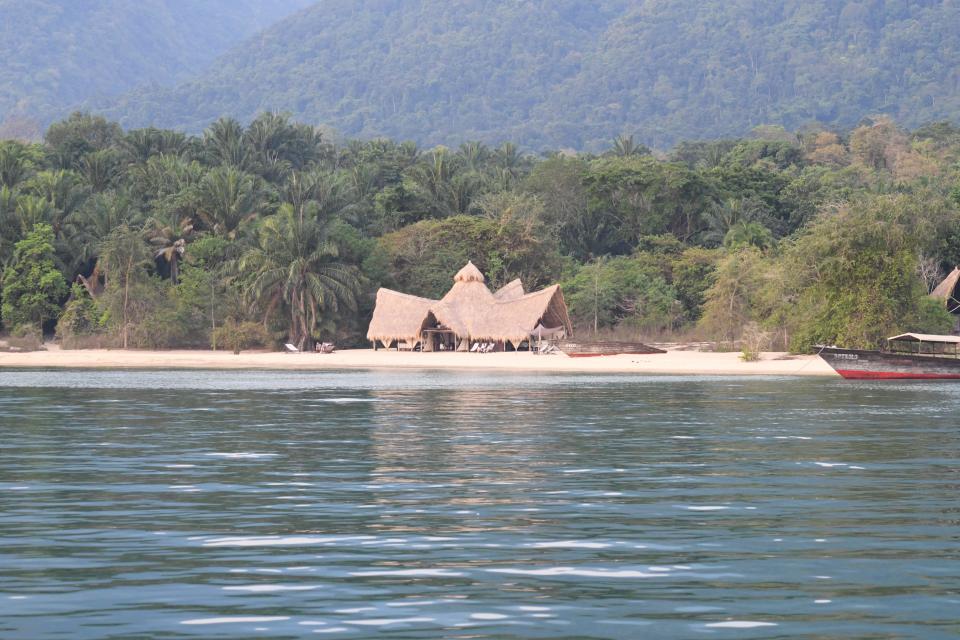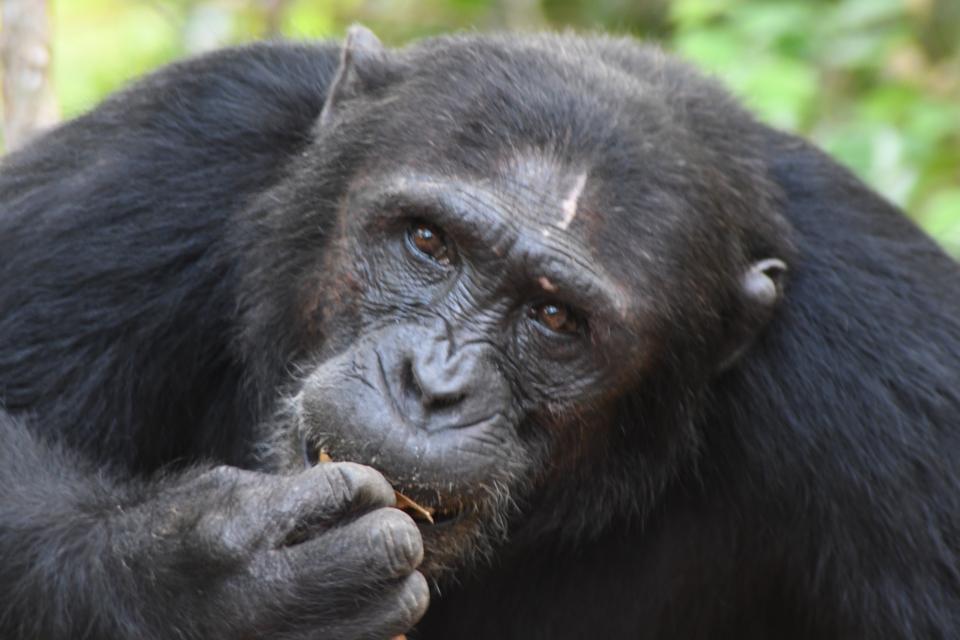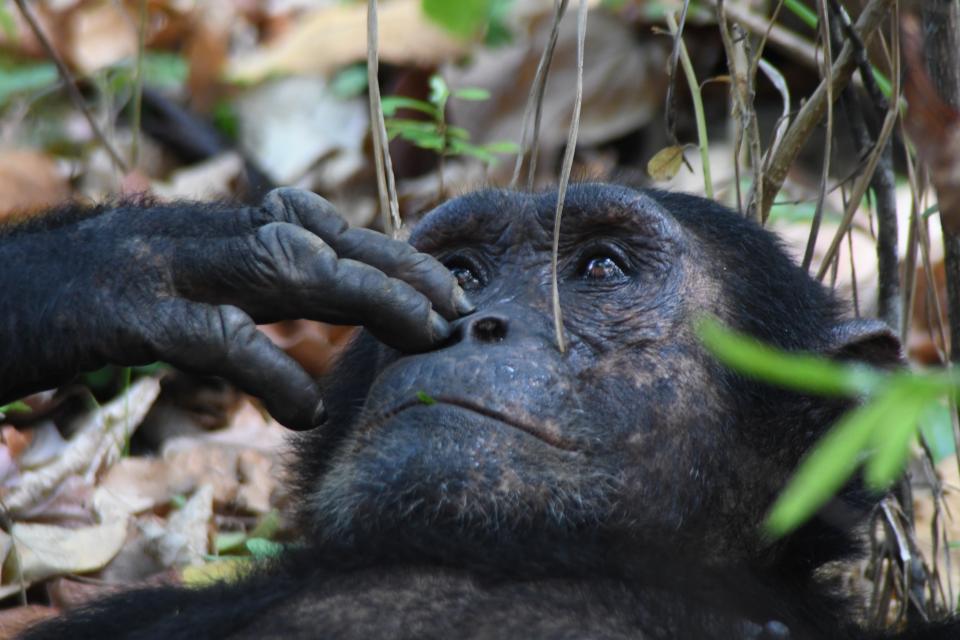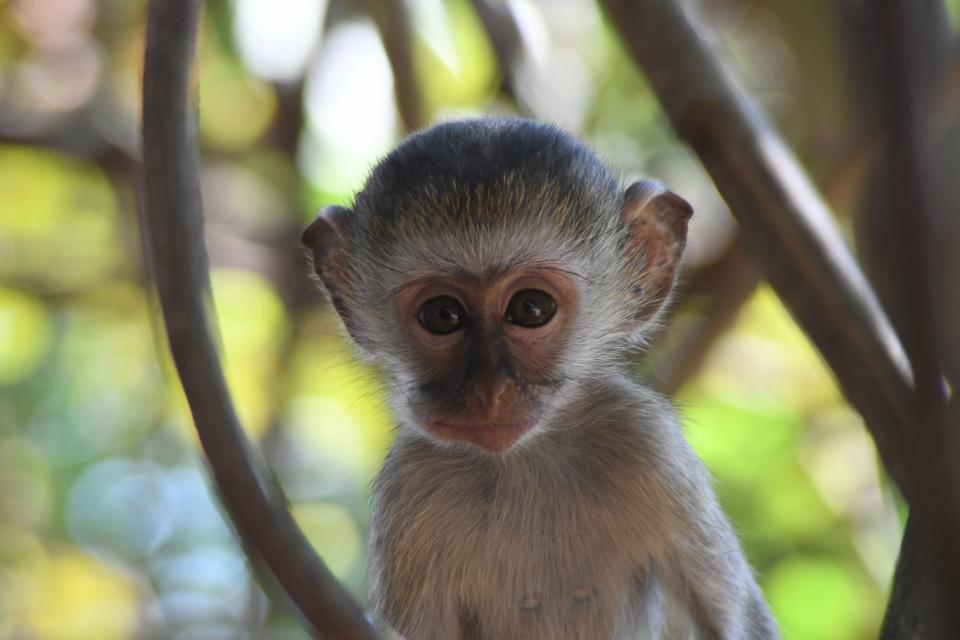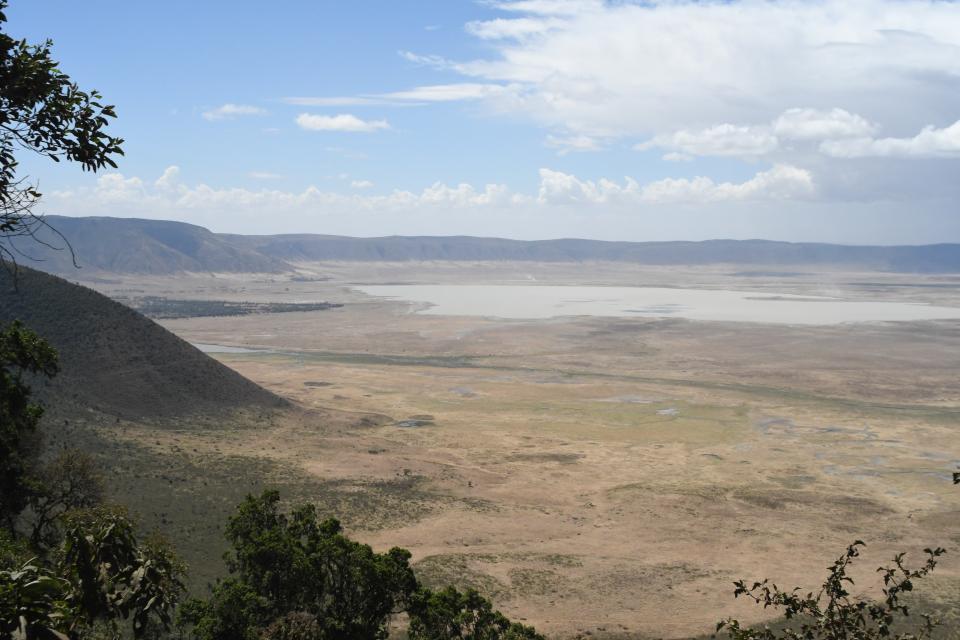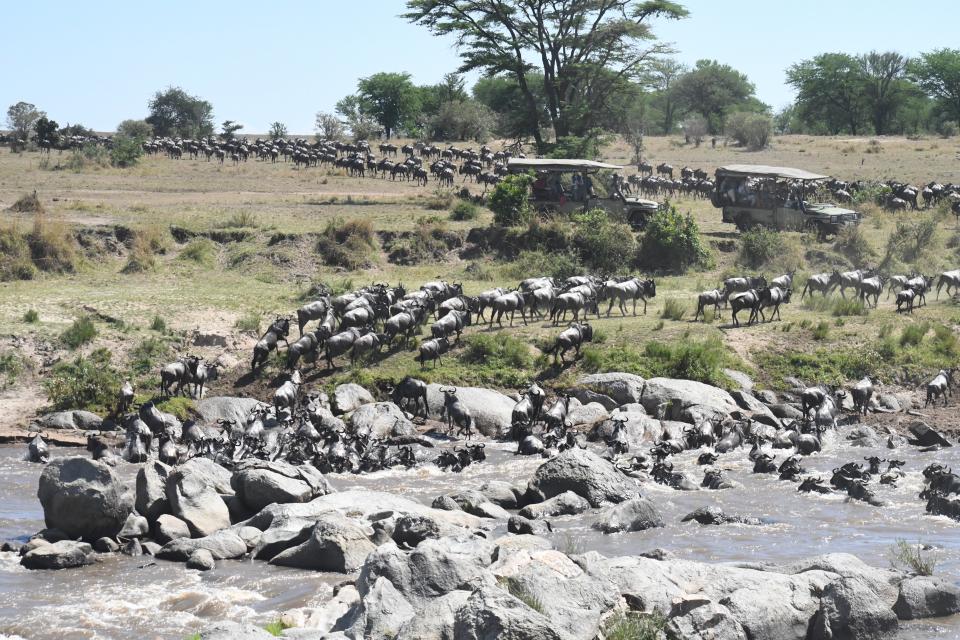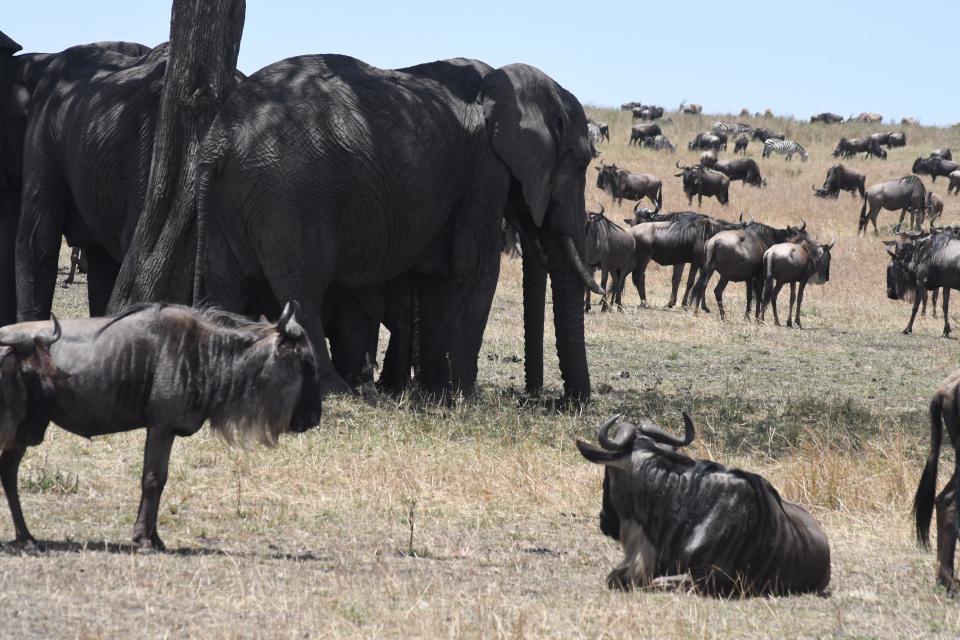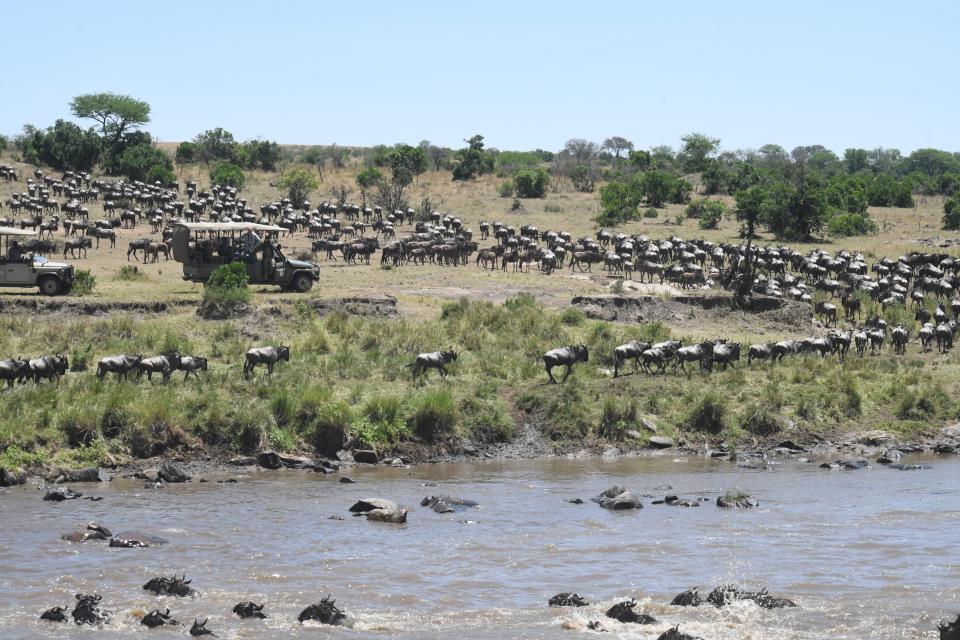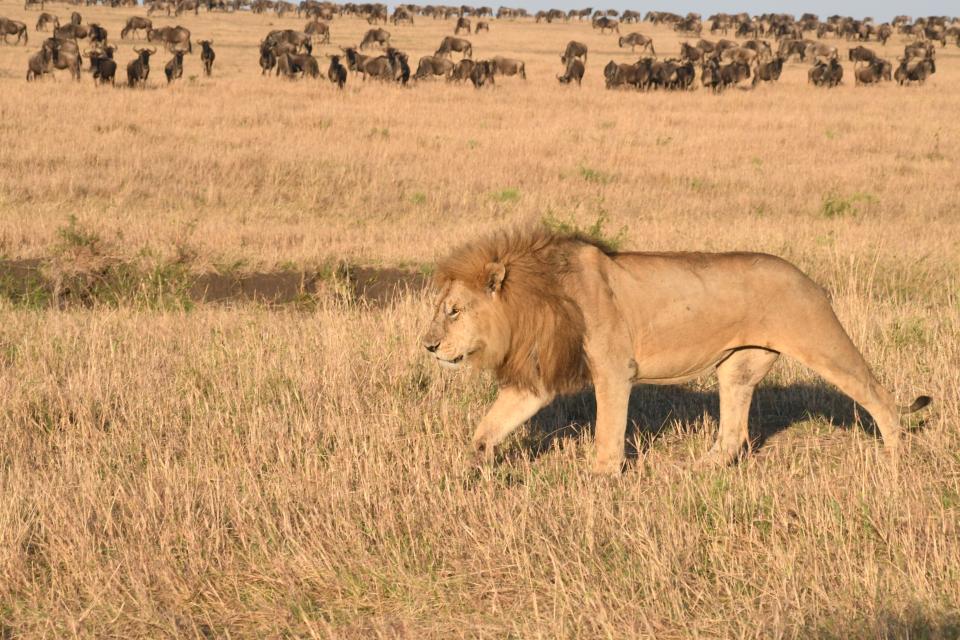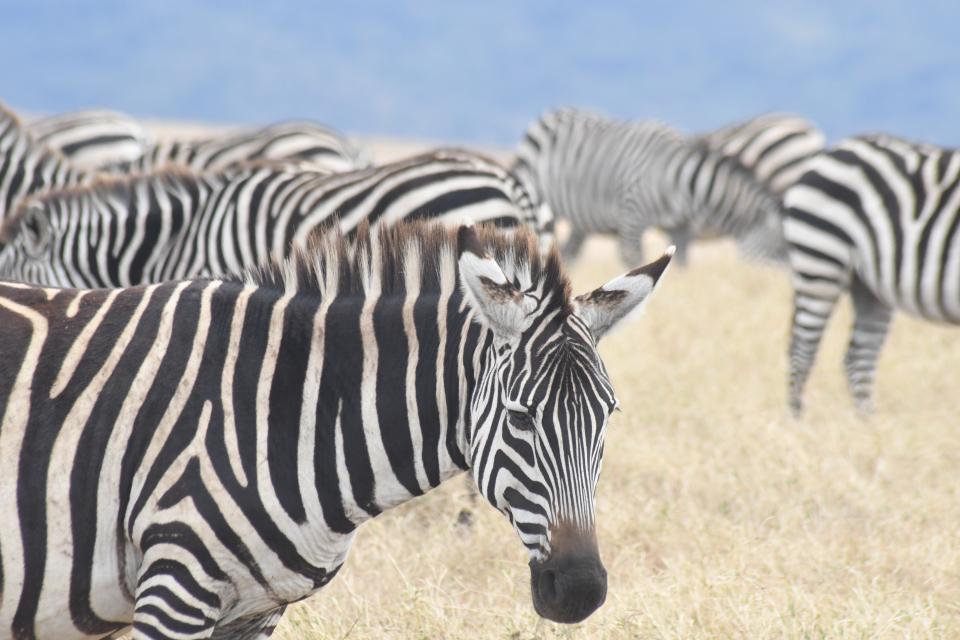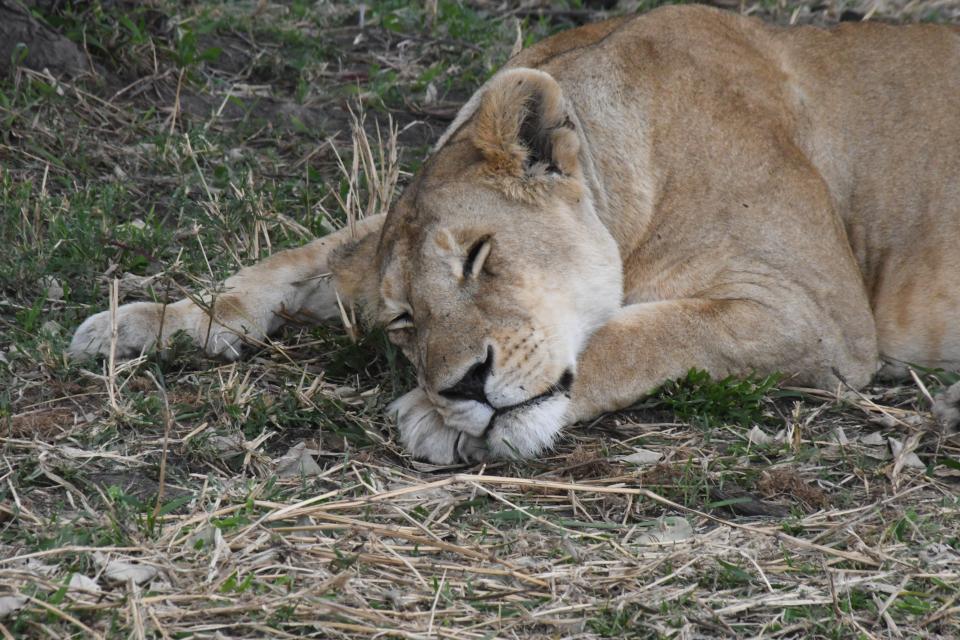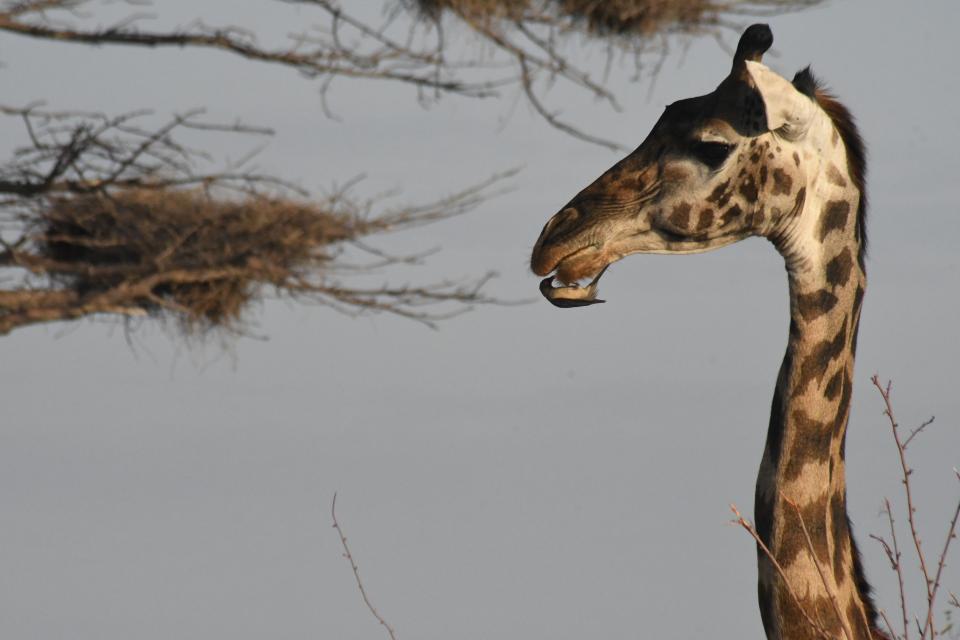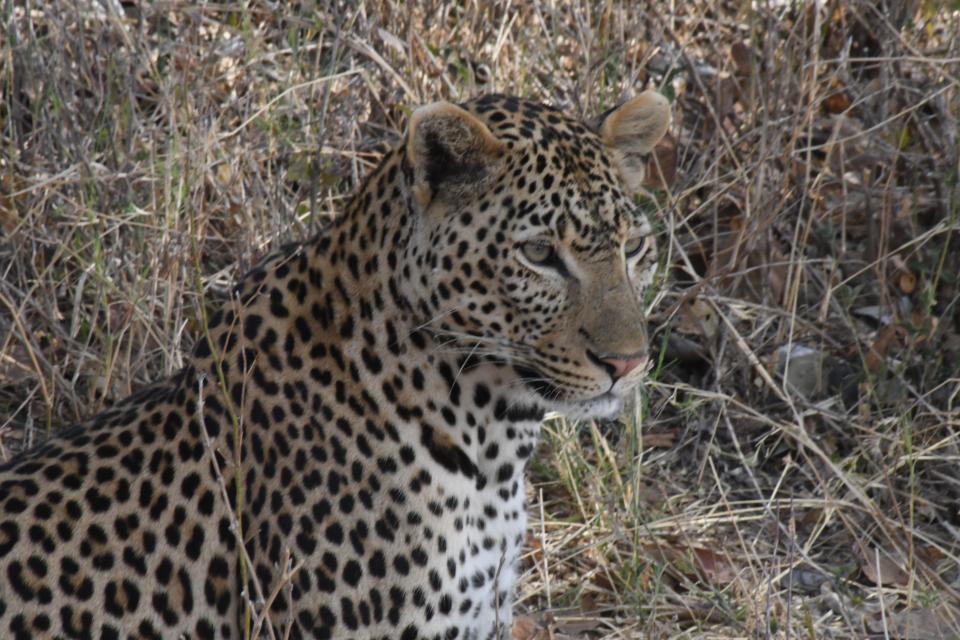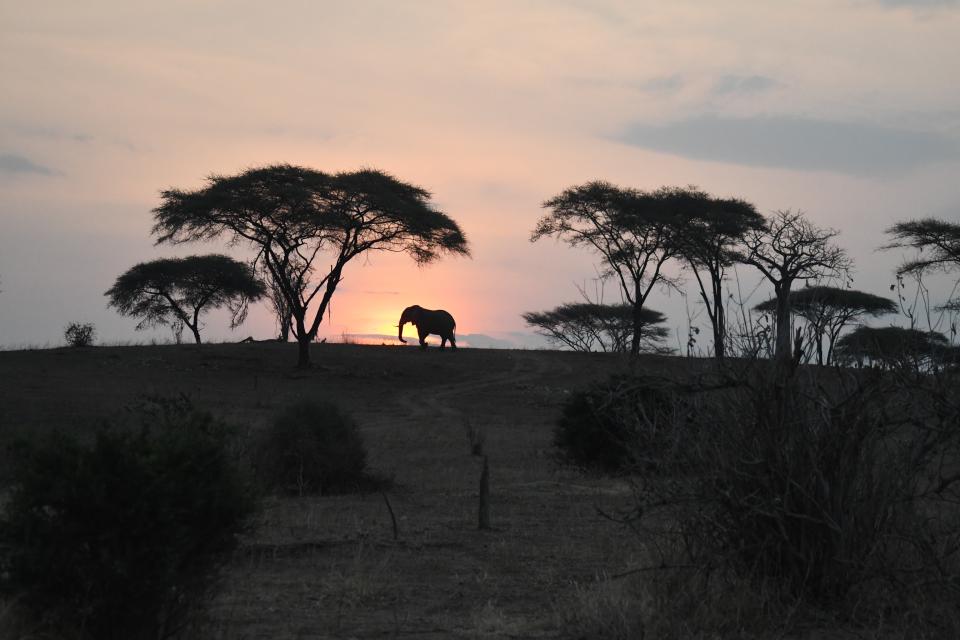By Kirsten – Sep/Oct 2018
Going to a new destination for me is super exciting and I couldn’t wait to explore Tanzania from top to bottom. I visited nearly all the properties in the Nomad Tanzania portfolio and I am glad that I did as they are so different from each other.
I flew on KLM via Amsterdam as that was the most convenient way so arrived late at night into Kilimanjaro. I was met by a rep from Nomad Tanzania and taken to a lovely property, Rivertrees Country Inn, for the night. My room was right by the roaring river which was such a lovely way to fall asleep for my first night in Tanzania.
I started at Greystoke Mahale. The lodge is spectacular sitting on the east coast of Lake Tanganyika, the longest and second oldest freshwater lake and second largest by volume as well as the second deepest in the world. It borders 4 Countries, Tanzania, Democratic Republic of the Congo, Burundi & Zambia. I was here to trek with the Mahale Chimps, something that I have wanted to do for a very long time. The rooms have an open front stretched along the shoreline and the main lodge is a unique build that allows the breezes coming off the lake to go through.
Hiking with the Chimps can be anywhere from easy (the 1st day trekking they were right behind bungalow # 7 and we followed them up and the 2nd day was more of a hike), to very difficult. Finding them can depend on the time of the year as to where they are as they feast on the flowers and fruits of the forest. The troupe that we were with was M Group and they are fully habituated and the only group, out of about 9, that you can visit in the park. I must say that they were the most special animal interaction ever and you can truly see yourself in some of the animals. They are very playful, cheeky, sweet, gentle, boisterous, loud and just amazing creatures. You get an hour with the chimps, but this is the actual time watching them. When you are following them up the mountain or waiting for another group to be with them the clock stops. In the end, it may be a few hours of hiking with them and being on the trails. I really felt at home here with the lodge managers, Barbara & Fabio leading the team and Mwiga & Butati as our exceptional guides. These guides have been with the chimps for years now and really know every individual’s personality and mood.
Leaving Greystoke Mahale was super sad as it’s such a special place. However, I was looking forward to the experiences that I had ahead of me.
Next stop was the Ngorongoro Crater and Entemanu Ngorongoro. I flew from Arusha to Lake Manyara (the jumping off point for the crater) and was picked up by my guide, Anafi, and driven the 2 hours to the lodge. After you go through the park gate most of the trip is along the top of the crater rim where the views can be outstanding. Entemanu sits on the dry forest side of the crater but with a spectacular view. It does get windy up here so you have to be prepared with long sleeves and jackets. It was warm during the day but, at night, the temperature can be cool and damp. Ben and his staff were great and there are fires in all the fireplaces and warm water bottles in your beds at night – such a cozy feeling. I only spent a few hours in the Crater due to one of the guests in my Land Cruiser being very sick but, what I saw was amazing. There are quite a few different prides of lion, but we saw all the usually suspects, even a couple of Rhino, and the game viewing is exceptional. Of course, it is quite busy with tourists as you not only have all the lodges on the rim, but clients come in from Karatu as there are many lodges outside the park.
Onward to the Serengeti! I stayed at Serengeti Safari Camp # 1 (there are 2 that are identical just a few miles apart). These tented camps move with the migration from the north to the south to the middle throughout the year. The tents are very comfortable with flush toilets, running water and bucket showers. The location is away from the other camps, so you feel like you have the whole Serengeti to yourselves. You can choose how your day goes. Since you are following the migration and most people, including me, wanted to see at least one crossing of the Mara River. I chose to have 1 day where I had a packed breakfast and came back after the morning drive for lunch and then went out again for the afternoon drive and the other had breakfast in camp and went out for the day. I was lucky enough to see 3 separate crossings, one lasting about an hour, and that was spectacular. When not waiting for a crossing we would search the Sand River or go up into the Kopjes.
Since the rains had been late, grasses in the north of Tanzania were still green so the migration was a little confused and we were able to see lots of wildebeest and zebra still over on the Tanzania side. Typically, they would be in over in Kenya in late September/early October.
There is certainly no shortage of lions and we did see a couple of leopards (one with a cub), but tried to find the cheetahs, which had been seen, but had no luck. Lots of hyenas and jackals roam the plains so also easy to see. We were one of the lucky few that saw a rhino, but it was so far away (you are not allowed to drive off road) but still great to see. There was a mother and baby rhino that was around the Sand River, but the rangers thought that they had gone over to the Kenya side the night before.
Obviously, there are a few permanent camps in the northern Serengeti, but there are quite a few mobile camps (like SSC) so vehicles, especially at the crossings, can be a little overwhelming. Moosa & Hamisi, my guides, did a great job to keep away from the crowds and look for stuff on our own.
I was lucky enough to be able to stay at Nomad’s permanent camp in the northern Serengeti, Lamai Serengeti, and was in the smaller of the 2 adjoining camps. This is a lodge style camp with all amenities (including the massage option!) and I really loved the location set within the Kopjes and the open fronted rooms. They obviously do the same drives that we did at SSC, so you have 2 great options for comfort and ambiance. Most of the clients that were at the mobile camp with me came and did a few nights at Lamai also, which was nice, as we all got along great and felt more like a big family.
Leaving the northern part of Tanzania, it was time to head to the dryer, warmer climates of the south. I joined up with an agent group, lead by Rupert from Nomad, at Kigalia Ruaha. This is a tented camp with bucket showers and flush toilets set on the banks of a, mostly, dry river bank. The manager, Ken, and his staff made us feel so at home here. Drives were done like everywhere else in Tanzania (except when you follow the migration) with breakfast in camp and then you go out for your drive, returning for lunch and a nap. Afternoon drives return before dark. There are no night drives allowed in the parks in Tanzania (and most everywhere in Africa) but they are starting a trial with only 3 camps in the Ruaha (being the 1st to try this concept) allowed to do night drives. I absolutely love night drives and it was so different from the daytime drives in Ruaha with all the night creatures, as well as the lions, out hunting.
A new option for Ruaha is hot air ballooning which, of course, we couldn’t pass up. We were collected at 5:50am and were up in the air for about 1 – 1 ½ hrs. We got to see quite a few animals from the balloon, but they are not used to the noise yet so were a little skittish. The vista was amazing, and sunrise is something special in the bush. To top it off we landed right at a ‘breakfast in the bush’ experience. Wonderful.
Ruaha is in the lowlands and even though it has a large permanent river running through it, it is a dry park. It was wonderful to be out in the wild seeing very few other vehicles after the Serengeti and I did fall in love with the park. We had great animal sightings but, being dry, there is certainly not the numbers that you get up north. The terrain and game are very interesting. We saw both lions and leopard as well as all the usual suspects except rhino.
I was very sad to leave as Joe, our guide, was wonderful and one of the best guides I have ever had. He was not only an amazing spotter but witty, charming and fit right in with our fun group.
Onto Selous and my last stop. We were staying at Sand Rivers Selous right on the mighty Rufiji river so that was such a different feel to the rest of the trip. Michelle and her staff couldn’t have been more attentive, and we did spend quite a bit of time drinking cocktails overlooking the river. The lodge has the most amazing, open fronted bungalows that are either overlooking the river, with hundreds of noisy hippos, or suites further up the hill overlooking the river system and the park. The rooms are wonderful with open bathrooms and nice breezes coming off the river. Selous doesn’t have the concentration of game but everyone is there but just in smaller numbers. The terrain is diverse with mountains, marshes, plains and the river system. Wild dogs are here, but unfortunately, they were too far away from our location.
Here we opted to do the ‘Fly Camping’. Basically, you go to a pre-determined spot (for us it was between 2 marsh areas with hippos and birds) and you sleep under cubed mosquito net tents under the stars. Dinner and breakfast are in the bush and there was a shower and toilet set up. This is something special for those who want a unique experience. Because there are no towns or lights anywhere, the stars are incredible and going to sleep with that spectacle and the sounds of the animals is hard to describe.
Promise is the Manager at Kiba Point and our guide for the days that we were at Sand Rivers. He is a wonderful guide, super knowledgeable and fun during our drives.
Kiba Point is just down the road from Sand Rivers Selous and part of the Nomad group. Again, these bungalows are spread a part for privacy and have totally open fronts with wonderful outdoor bathrooms overlooking the river. This is a smaller camp than SRS and only booked on a private basis, but what a way to have your family together in this outstanding place.
My trip was three weeks long, but really it flew past as each place was so different. The staff and guides throughout were amazing. Now, it is back to the salt mines with some wonderful memories and new knowledge to pass onto our prospective Tanzania clients!
